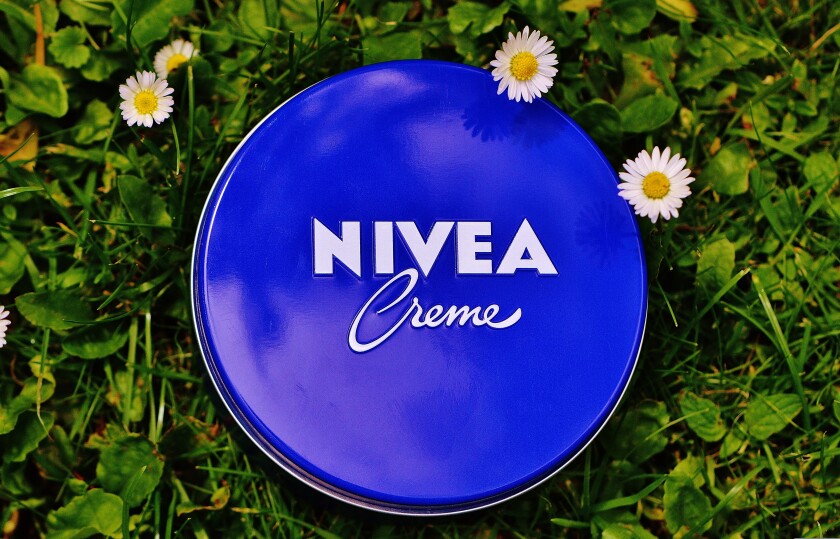The High Court of Delhi recently examined an application for a preliminary injunction by Beiersdorf AG (Beiersdorf), which sells face and body cream under the mark ‘Nivea’, against Hindustan Unilever Limited (HUL) for comparing and denigrating Beiersdorf’s Nivea product while promoting its Pond’s creams.
Background to the case
In 2021, Beiersdorf discovered that HUL was marketing/promoting its Pond’s Super Light Gel by comparing it with Beiersdorf’s ‘blue tub’ Nivea Crème (without any brand) in shopping malls in Delhi and Gurgaon (an impugned activity). HUL's sales representatives, while promoting the Pond’s product, would apply the cream from the blue tub to customers' hands and used a magnifying glass to show that the blue tub cream left an oily residue, unlike HUL's product.
Beiersdorf claimed this disparaged its product and issued a cease-and-desist notice to HUL, resulting in the lawsuit.
Beiersdorf’s submissions
Beiersdorf made the following submissions:
Nivea’s iconic packaging, below, features a flat can with a distinctive blue colour (Pantone 280C) and white branding, which acts as its source identifier.

The ‘Nivea’ mark has been extensively used and promoted in various forms, including the below.

The ‘Nivea’ trademark and its variants are registered in over 175 countries, with the earliest registration in India in 1943, in Class 3.
While the blue colour mark, below, is not registered in India, it has been registered in Germany (Registration No. 30571072) since November 30 2005, in Class 3.

The distinctive blue colour and unique trade dress for the Nivea product have been widely used and advertised globally, creating strong consumer recognition.
‘Nivea' was declared a well-known trademark by the High Court of Delhi on November 14 2008.
The grievance concerns HUL's promotional campaign by its sales representatives, as demonstrated by the images below.

HUL was incorrectly comparing two different cream categories. Product comparison tables focusing on fatty matter percentages are shown below.




Beiersdorf alleged there are three product categories in this cream segment. The 'heavy category' includes Beiersdorf’s Nivea Crème and HUL’s Pond’s Cold Cream, with 25–28% fatty matter. The 'light category' includes Beiersdorf’s Nivea Soft and HUL’s Pond’s Light Moisturiser, with 10–15% fatty matter. The 'gel category' includes Beiersdorf’s Nivea Men Fresh Gel and HUL’s Pond’s Super Light Gel, with 1–8% fatty matter.
The campaign compared Beiersdorf's heavy category product with HUL's gel category product, using the blue tub to reference Beiersdorf's product. This misleading comparison aimed to show that Beiersdorf's product left an oily residue, while HUL's did not.
Beiersdorf cited successful enforcement cases in India and abroad in which HUL disparaged its products, particularly the 'Nivea' brand in distinctive blue packaging.
HUL’s contentions
HUL presented the following contentions in response:
While comparing brands is allowed, portraying another brand negatively constitutes disparagement.
The impugned activity did not show any other brand; instead, a cream in a blue tub was used for comparison. Even if presumed to be Nivea, it does not amount to disparagement, since it merely compares oily residue between two creams.
Disparagement can target a specific brand or product category. Even if “Nivea” was shown, it merely suggests its oiliness, which could be preferable for some users, depending on their skin type or the season.
Beiersdorf cannot claim exclusive rights to the blue colour or blue containers, as many moisturisers use them. Images of third-party moisturisers in blue packaging were provided.
Beiersdorf marketed different creams – including moisturisers in packaging of various colours, as shown below – which it suppressed.

Beiersdorf lacked trademark registration for the colour blue (Pantone 280C) in India. Trademark rights are territorial, so registration elsewhere does not benefit it in India.
Even if the product in question is Beiersdorf's, the comparison did not conclude which product was superior. Both were moisturising creams, and Beiersdorf's contention of dissimilarity is unfounded.
Past litigation between the parties regarding the use of the colour blue does not determine the current case's merits.
Rejoinder by Beiersdorf
Beiersdorf submitted the following rejoinder:
Third-party products with a blue colour, shown by HUL, were not available in India, making them irrelevant examples;
Despite being stopped from using the blue colour in previous instances, HUL deliberately used it for its cream comparison; and
HUL's choice to compare a heavier cream with its light gel using a blue tub, despite alternatives, suggests an intent to showcase its product's lighter consistency.
The High Court of Delhi’s analysis and decision
The court restrained HUL from conducting disparaging marketing activities, based on principles outlined in a May 2023 judgment in Wipro Enterprises, citing a comprehensive summary of previous court decisions on comparative advertising in India.
The court's analysis focused on:
Associating the blue cream tub with Beiersdorf's Nivea Crème;
HUL's knowledge of the blue colour's distinctiveness for Nivea Crème;
The intent behind using only the blue cream tub;
The comparison made during the activity; and
Distinguishing between mere ‘puffery’ and disparagement.
The colour blue
Beiersdorf's use of the distinctive blue colour for its cream tub serves as a 'source identifier', established over a century of consistent use, making association with Beiersdorf's products evident.
HUL's argument about Beiersdorf selling products in different-coloured packaging is irrelevant, as the flagship Nivea Crème and related products are predominantly associated with the distinctive blue colour.
HUL's choice of a blue tub, mirroring Beiersdorf's colour, suggests an intentional association with Beiersdorf's product.
HUL’s knowledge
HUL's awareness of the association between the Pantone blue colour and Beiersdorf is evident from cited instances in India and abroad. Despite past litigation, injunctions, and complaints on this issue, HUL's choice to use a similar blue tub for comparison raises questions about its intent in promoting its product.
Intent and objective
HUL could have opted for a different-coloured tub labelled as heavy cream for comparison, providing clear product identification. Instead, by using an unmarked, but distinctive, blue tub, it left consumers unaware of the cream's consistency. This approach veers into deception and misrepresentation, potentially leading to disparagement.
The presented comparison
HUL's comparison of its lightest product (Pond’s Super Light Gel) to Beiersdorf's heaviest product (Nivea Crème) is intrinsically misleading. Comparisons should ideally involve similar products.
The court found HUL's comparison of dissimilar products, particularly regarding a significant feature such as 'stickiness', misleading. Despite no verbal communication, consumers may infer that HUL's product is lighter and superior in this aspect compared with the cream in the blue tub.
According to the Advertising Standards Council of India’s Code for Self-regulation of Advertising Content in India, Clause 4.1(a) mandates that comparative advertisements clearly specify which aspects of the advertiser's product are being compared with the competitor's, and Clause 4.1(d) requires that there be no likelihood of consumer deception resulting from the comparison.
Puffery or disparagement
Assessing disparagement requires examining the overall effect and message conveyed. HUL’s argument that stickiness or oily residue is not necessarily disparaging was not accepted. The comparison's premise was that the blue tub’s cream left an oily residue, implying stickiness negatively.
Concluding thoughts
This decision, on May 9 2024, reinforces India's evolving jurisprudence on comparative advertising. In the fast-moving consumer goods sector, brands fiercely compete for consumer attention, often resorting to comparative advertising to boost sales. While puffery is permissible, however, denigrating another brand in the process is not.













